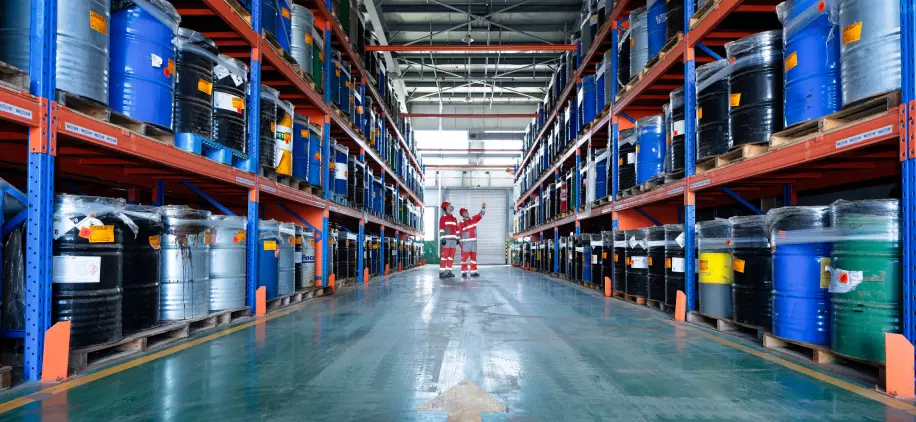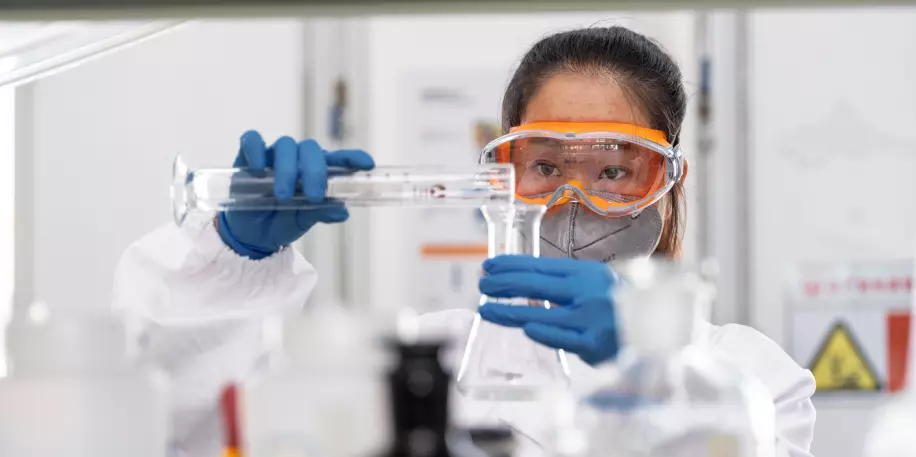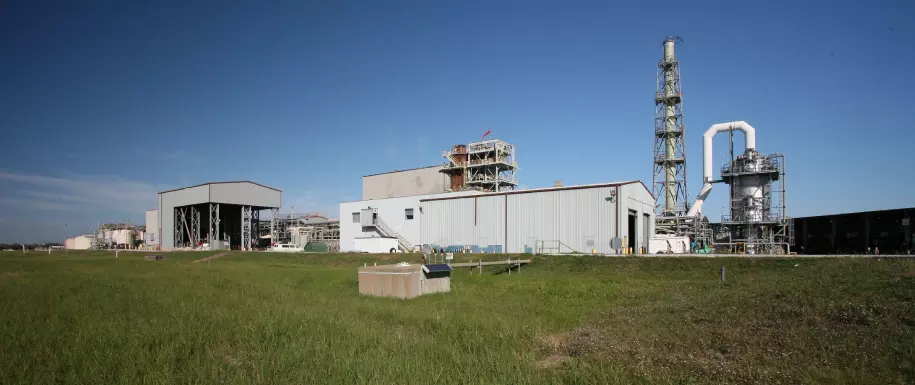Reading time 8 min. #waste #city #community #industrial

Benjamin Chan-Piu
Director, Liquid and Hazardous. Waste Treatment and Recovery, Veolia
The management of hazardous waste is now a major challenge for industries and local authorities. For many years, I have supported clients who are faced with the growing complexity of hazardous waste streams and increasing regulatory pressure—whether it be hazardous industrial waste from the automotive, chemical, or pharmaceutical industries, hospital waste, or even radioactive waste.
Their primary concern? Ensuring the safety, traceability, and compliance of their waste management, while controlling costs and minimizing their environmental impact. But behind these constraints, I have seen the development of innovative solutions for treating and recovering hazardous waste, all of which share a common goal: to limit the environmental impact of industrial activities, prevent the spread of pollution, and promote a circular economy.
This approach, implemented daily by more than 18,000 people in the Veolia Group worldwide, relies on a range of treatment solutions, from recycling to high-temperature incineration, as well as secure landfill, necessary to address the diversity of waste types (chemical industry waste, medical waste, radioactive waste, batteries, solvents, etc.).
If you are looking to protect your industrial sites and your region from any contamination, safeguard public health, and combat harmful pollution, the solutions exist.

Key points to remember
Hazardous waste is a major challenge, both from a health and environmental perspective.
Hazardous waste represents a market worth 35 billion euros, with diversified solutions for treatment and recovery (notably incineration, recycling, vitrification, soil remediation, etc.).
Strict and specific protocols are applied to manage hazardous waste so that it no longer poses a threat to the population or the environment.
The circular economy applied to hazardous waste offers concrete benefits: risk reduction, cost optimization, and a reduced environmental footprint for industries. One of the prerequisites for implementing these channels is ensuring that they do not reintroduce contaminants into circulation (for example, heavy metals, persistent organic pollutants, etc.).
The management of hazardous waste is subject to strict regulations that prevent pollution, protect public health and the environment, and ultimately accelerate the transition toward circular and responsible models.
Thanks to our unique portfolio of technologies, we offer cities and industries safer, more efficient, and more sustainable hazardous waste management, serving both health and the environment.
Discover in this article how we can support you in the treatment of your hazardous waste, whether you are an industrial company or a local authority.
The main challenges of hazardous waste management: complexity, diversity and regulatory pressure
But first, what is hazardous waste? Hazardous waste is discarded material or substances that can be dangerous to human health or the environment, for example, toxic, flammable, corrosive, chemically unstable, infectious or radioactive materials.
The diversity of hazardous waste is a primary challenge. This waste comes from numerous industries, such as solvents from pharmaceutical or pesticide synthesis, paint residues used in the automotive industry, end-of-life wind turbine blades, infectious medical waste, lithium batteries, polluted soil, materials used for filtering pollutants in water (contaminated activated carbon and resins), acidic solutions from metal surface treatments, asbestos, etc.
The complexity of treatment channels has increased with the emergence of new pollutants (PFAS, micropollutants), the necessity to recycle or regenerate certain streams (solvents, batteries, oils), and the scarcity of strategic raw materials.
In this context, several sustainable solutions can be proposed to clients: high-temperature incineration, physico-chemical treatments, stabilization and secure landfill, vitrification, recycling, etc.
Furthermore, regulatory and societal pressure are intensifying. Authorities are imposing increasingly strict standards on traceability, safety, emission limitation, and waste recovery. The expectations of local residents and stakeholders are rising, particularly regarding transparency, risk management, and sustainability.
Securing access to resources (energy, precious metals, solvents) is becoming strategic in the face of market volatility and challenges related to industrial relocation. Industries are seeking to transform their waste into resources, reduce their dependence, and anticipate regulatory changes (Critical Raw Material Act, European directives on batteries, etc.).
I therefore understand that for you, local authorities, the management of hazardous waste from households or local businesses represents a major challenge to public health and environmental preservation in your territory. For you, industries of all sectors (chemicals, petrochemicals, mechanical, batteries, medical, etc.), it is also a crucial issue for industrial risk prevention, regulatory compliance, operational performance, and securing supplies of secondary raw materials.
Overview: high-performance solutions for each type of hazardous waste
Each type of waste has its own specific characteristics and constraints, but for some, also opportunities for recovery, and each requires advanced expertise to ensure safety, traceability, and regulatory compliance. Hazardous waste is not all systematically incinerated. I see it every day: recovery solutions for hazardous waste are still little-known, yet there are many of them.
"By controlling the complete hazardous waste treatment cycle, Veolia’s solutions limit the environmental impacts of industrial activities, avoid the dispersion of pollution into the environment and promote the circular economy."
Specific treatments for each type of hazardous waste
Contrary to the common belief that all hazardous waste is incinerated, I guide my clients toward a range of tailored solutions:
- High-temperature incineration: This is a versatile and effective solution for destroying complex organic waste (reactive and/or highly toxic), persistent organic pollutants (PCBs, targeted PFAS, pesticides, chlorinated solvents), and laboratory waste. The energy generated from burning this waste is generally recovered as steam or electricity.
- Physico-chemical treatments: Various processes exist to neutralize dangerous liquid waste (such as acidic solutions) or heavily contaminated waste (heavy metals, cyanides, etc.). These treatments (neutralization, centrifugation, evaporation-concentration, emulsion breaking, etc.) often involve separating and/or neutralizing the hazardous fraction of the waste, and sometimes allow for the recovery of valuable fractions—particularly for waste containing hydrocarbons.
- Regeneration of solvents, used oils, acids, lubricants, etc.
- Material recovery for electric vehicle batteries and precious metals: these streams are transformed into high-quality secondary raw materials and reintroduced into industry.
- Energy recovery for used oils, from which we produce biofuels.
- Vitrification (GeoMelt®) for low-level radioactive waste, ensuring long-term stabilization by immobilizing radionuclides in an ultra-stable glass.
- Decontamination and recycling of contaminated soils (by heavy metals, hydrocarbons, or PFAS), with recovery of treated soil for reuse in urban or industrial development.
- Secured class 1 landfill for stabilized ultimate hazardous waste such as polluted sludge, friable asbestos, etc., with enhanced traceability and environmental monitoring.

Focus on PFAS: a unique solution for the integrated management of emerging pollutants
One of our strengths lies in combining our areas of expertise to provide greater value to our clients. Combining water treatment expertise with hazardous waste management enables us to offer an integrated, end-to-end solution for the treatment of PFAS.
These per- and polyfluoroalkyl substances are now ubiquitous in our daily lives, widely used especially for their non-stick, waterproofing, heat-resistant, or insulating properties. Today, these micropollutants represent an urgent environmental concern, impacting drinking water supplies and ecosystems.
Our holistic BeyondPFAS offer is tailored to the specific needs of each client, local regulations, and on-the-ground realities—from detection to the final treatment of contaminants.
Innovation in the service of circularity and performance
Thanks to the unique combination of our expertise in our three core sectors (water, waste, energy), we encourage synergies between all stakeholders in the regions, notably by pooling infrastructure and optimizing flows. I have seen industrial companies share treatment platforms, exchange recoverable waste streams, or co-invest in recycling units. The benefits are numerous: cost reduction, securing supplies, creation of local jobs, and improved social acceptability.
Regulatory framework: accelerating transformation
Regulatory requirements are tightening worldwide as a result of increased ecological awareness and the emergence of new pollutants. As local authorities or industrial companies, you must anticipate inspections, ensure compliance, and reassure the public.
The management of hazardous waste is subject to obligations and regulated by several legislative and regulatory texts. Some examples include:
- Environmental Code in France: Every producer of hazardous waste is subject to numerous obligations (registration requirement, regulatory monitoring, risk inventory, and preventive measures, etc.). The polluter-pays principle applies: any company producing waste must bear the costs of prevention, pollution reduction, and contamination control.
- European Critical Raw Materials Act: European legislation on critical raw materials aims to ensure a secure and sustainable supply of critical raw materials to the European Union, such as lithium, cobalt, or nickel, which are needed for manufacturing electric vehicle batteries.
- Regarding PFAS, regulations are rapidly evolving to set ever-stricter limits. The European Directive 2020/2184 on the quality of water intended for human consumption has been revised to monitor PFAS in water analyses, targeting 20 molecules. In France, a decree has set limits since 2023: 0.1 μg/L for the sum of 20 PFAS. In the United States, the EPA (Environmental Protection Agency) has set even stricter thresholds for certain molecules.
Our main references in the treatment and recovery of hazardous waste
Solvent regeneration in Chauny
In Chauny, in the Aisne department in northern France, our facility recycles 18,000 tons of solvents per year. This circular approach allows local industries to reduce their supply costs by 30% while lowering their carbon footprint (replacing 1 ton of new solvent with recycled solvent results in a saving of 6 tons of CO2). A concrete example: a regional paint manufacturer recovers its regenerated solvents with the same quality as virgin solvents, creating a virtuous local cycle.
Port Arthur, operational excellence
Our facility in Port Arthur, Texas, represents operational excellence in the treatment of hazardous industrial waste. With a capacity of 70,000 tons of hazardous waste per year and an operating temperature above 1100°C, it is the only high-temperature incineration facility in the United States authorized for the most complex dioxin and PCB (polychlorinated biphenyl) wastes. This technical expertise allows us to handle waste streams that others cannot manage, creating significant added value: the average price per ton increased by 72% between 2021 and 2023, demonstrating the market's recognition of our unique know-how and our ability to meet the most demanding challenges.

Vitrification of nuclear waste in Andrews, Texas
Also in Texas, in 2022, we opened a GeoMelt® facility to vitrify low-level nuclear waste. This revolutionary technology completely immobilizes radionuclides in an ultra-stable glass, ensuring safety for thousands of years while reducing long-term management costs.
Structuring a national medical waste management sector in Morocco
In Morocco, we have developed a comprehensive solution for treating hazardous medical waste. Faced with the absence of suitable infrastructure and major health risks, we have established a secure collection network and a sterilization unit that meets international standards. This holistic approach enables Moroccan hospitals, clinics, and laboratories to comply with health requirements while benefiting from complete traceability. The project illustrates how technical expertise can structure an entire sector, creating value for the entire national healthcare system while protecting the population and the environment.
Recycling electric car batteries in Moselle
In the east of France, we have supported the commissioning of electric battery recycling centers capable of processing 10,000 tons per year. Thanks to a hydrometallurgical separation and extraction technology, we recover strategic metals such as nickel, cobalt, lithium, and copper, which are processed and reintegrated into the European battery production sector.
Acting together for responsible, high-performance, and value-creating management
We transform hazardous waste management into a lever for performance, safety, and attractiveness for industries and regions. By combining innovation, pooling of resources, and circularity, we address regulatory, economic, and societal challenges while creating lasting value. Whether you represent a local authority or an industrial site, I invite you to rethink your hazardous waste streams as strategic resources, to engage in local synergies, and to anticipate changes in the sector.
At Veolia, we are here to support you in this transformation. Contact us to discuss your challenges and discover how we can transform your hazardous waste management.
Benjamin Chan-Piu
Director, Liquid and Hazardous. Waste Treatment and Recovery, Veolia
Benjamin Chan-Piu is the Director of the Hazardous Waste segment at the Veolia’s Business Support & Performance department, where he oversees the support to hazardous waste activities throughout the Group (300+ facilities and a community of 18,000 Resourcers).

This article contains text partially generated with the assistance of generative artificial intelligence, based on the Group’s knowledge base. The content has been reviewed and validated by the expert.

